![]() Brief biographies of some famous, and not-so-famous, Australians. Most of these biographies are of authors and poets; however, it is intended to expand the collection into other fields as well.
Brief biographies of some famous, and not-so-famous, Australians. Most of these biographies are of authors and poets; however, it is intended to expand the collection into other fields as well.
(Entries are arranged alphabetically by surname.)
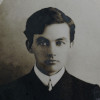 William Baylebridge
William Baylebridge
William Baylebridge (1883-1942) was an author, poet, and philosopher. During his lifetime, seventeen of his books were published (with several more being published after his death). He was regarded as one of the leading Australian writers of his time.
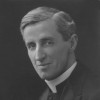 Norman L. Beurle
Norman L. Beurle
Norman Louis Beurle (1876- 931) was an author, poet, and Baptist Church minister. His works, often with a religious tint, were published in various Australian newspapers, including The Australasian, The Herald, and The Weekly Times.
 Barcroft Boake
Barcroft Boake
Barcroft Boake (1866-1892) was a surveyor, stockman, drover, and poet, especially well-known for his poem “Where the Dead Men Lie”. A collection of his poetry, Where the Dead Men Lie and Other Poems (1897), which also included a biography, was published five years after his untimely death.
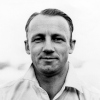 Don Bradman
Don Bradman
Don Bradman (1908-2001) was Australia’s greatest cricketer, being the most successful batsman to have ever emerged in the history of cricket — not just in Australia, but around the entire world. During his time as an active cricket player, he was the nation’s most famous sportsman.
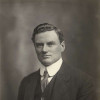 E. J. Brady
E. J. Brady
Edwin James Brady (1869-1952) was an author, editor, and poet. He wrote eighteen books and edited at least another two, as well as working as a newspaper journalist and editor.
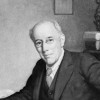 John Le Gay Brereton
John Le Gay Brereton
John Le Gay Brereton (junior) (1871-1933), known to his friends as “Jack”, was an author, poet, literary critic, and scholar. He was considered to be a leading world-class expert on Elizabethan literature.
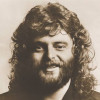 Brian Cadd
Brian Cadd
Brian Cadd (born 1946) is a singer and songwriter. His main instrument of choice is piano or keyboards. He was in two prominent Australian bands, The Groop (1966-1969) and Axiom (1969-1971), as well as having a successful solo career.
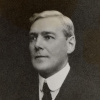 Erle Cox
Erle Cox
Erle Cox (1873-1950) was an author and poet. He wrote for The Lone Hand, The Bulletin, The Argus, and The Age. He produced three novels, as well as several short stories. The most successful of his books was Out of the Silence (1925), which was originally published in serial form in 1919.
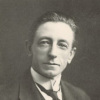 C. J. Dennis
C. J. Dennis
Clarence Michael James Dennis (1876-1938), known as C. J. Dennis, was an author, poet, and journalist. He wrote twelve books of poetry. He was well-known for using the common language of the Australian people in his poetry, incorporating slang and abbreviated words in the style that was used by the working people of the time. C. J. Dennis is best known for his popular book of poetry, The Songs of a Sentimental Bloke (1915).
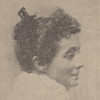 Mary Hannay Foott
Mary Hannay Foott
Mary Hannay Foott (1846-1918) was an author, editor, poet, and teacher. Her early works were written under her maiden name, Mary Hannay Black. Her most well-known work is the poem “Where the Pelican Builds” (1881).
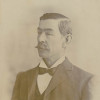 Joseph Furphy
Joseph Furphy
Joseph Furphy (1843-1912) was an author, poet, farmer, bullock-driver, and iron worker. He often wrote under the pseudonym of “Tom Collins”. Joseph Furphy is best known for his novel Such is Life: Being Certain Extracts From the Diary of Tom Collins (1903).
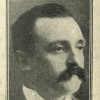 W. T. Goodge
W. T. Goodge
William Thomas Goodge (1862-1909) was an author, poet, journalist, and newspaper editor. He wrote topical poetry and humorous verse, as well as articles and short stories. Goodge was particularly well-known in Orange (NSW), where he worked as the editor of one of the local newspapers; although he gained a nationwide audience with his poetry being published in The Bulletin and various other newspapers. His most famous work is the poem “The Great Australian Adjective” (1897).
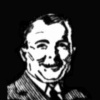 Martin Hambleton
Martin Hambleton
Martin Hambleton was the pen-name of Thomas Edward Martin (1869-1938); he was a teacher, and a writer for the The Sunday Mail (Brisbane). He penned a large number of brief articles, written especially for children; of particular note was his wide range of articles on various topics of Australian history.
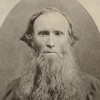 Charles Harpur
Charles Harpur
Charles Harpur (1813-1868) was Australia’s first significant native-born poet and has been described as “The father of Australian poetry”. He has often been credited as the first native-born poet to have had his works published in Australia, although that distinction actually belongs to Charles Tompson; however, Harpur was Australia’s first poet of consequence, and is still highly regarded in modern times.
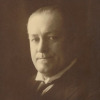 Grant Hervey
Grant Hervey
Grant Hervey (1880-1933) was an author, poet, and journalist (and, occasionally, a white-collar criminal). He wrote for The Bulletin, and had a short-lived column, “Cuts and Carvings”, in The Sunday Times (Perth). Hervey produced a book of poetry, Australians Yet and Other Verses (1913), as well as a novel (the latter being published posthumously).
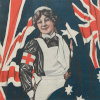 Lucy Everett Homfray
Lucy Everett Homfray
Lucy Everett Homfray (1873-1951) was an Australian poet and author. Many of her poems had a patriotic or religious aspect. Even though she was only a minor poet, Homfray had a significant number of pieces published. Although Lucy Homfray never produced a literary piece which captured the general public’s attention, her efforts on the literary scene, especially her patriotic pieces, commend her to the Australian people.
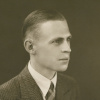 Rex Ingamells
Rex Ingamells
Reginald Charles Ingamells (1913-1955), known as Rex, was an author and poet, as well as being the founder of the Jindyworobak cultural movement, which promoted cultural Australianism, based in part upon Aboriginal themes and ties to the land. He wrote 23 books (mostly poetry) and edited several literary magazines.
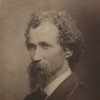 Henry Kendall
Henry Kendall
Henry Kendall (1839-1882) was an Australian poet of high renown, being regarded as “Australia’s greatest lyric poet”. He is particularly well-known for his poems dealing with Australian life and landscape, such as “Bell Birds”, “Christmas Creek”, and “On a Cattle Track”. His poem about the death of his baby daughter, “Araluen”, is also highly acclaimed.
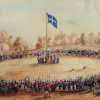 Thomas Kennedy
Thomas Kennedy
Thomas Kennedy (1817-1859) was a miner, who had a minor role in the events of the Eureka Rebellion of 1854. He spoke at various meetings, was a part of the miners’ delegation which met with Governor Hotham to seek the release of those men who were arrested after the burning of the Eureka Hotel, and was one of the delegates sent to Creswick to drum up support for the diggers’ cause.
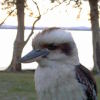 “Kookaburra”
“Kookaburra”
“Kookaburra” was the pseudonym of an anonymous writer and poet who was often published in The Evelyn Observer, and Bourke East Record (Kangaroo Ground, Vic.), and its later incarnations as The Eltham and Whittlesea Shires Advertiser and Diamond Creek Valley Advocate (Hurstbridge, Vic.) and The Advertiser (Hurstbridge, Vic.). Poems and articles by “Kookaburra” appeared in the local newspaper from 1916 to 1931. The real identity of “Kookaburra” is currently unknown.
 Gertrude Lawson
Gertrude Lawson
Gertrude Lawson (1877-1945) was an author, and the sister of Henry Lawson. She wrote articles and short stories, and for a short period managed the Dawn magazine (which had been founded by her mother, Louisa Lawson).
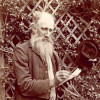 Philip Lorimer
Philip Lorimer
Philip Durham Lorimer (1843-1897) was a poet and swagman. His works were published in a number of regional newspapers, and a collection of his works (including a short biography) was published posthumously, Songs and Verses by Philip Durham Lorimer: An Australian Bush Poet (1901).
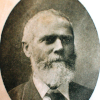 John Lynch
John Lynch
John Lynch (1828-1906) was an author, surveyor, gold digger, and one of the leaders of the Eureka Rebellion at Ballarat in 1854. He wrote The Story of the Eureka Stockade (1947), which was originally published in serial form in the Austral Light magazine in 1893-1894.
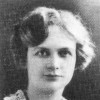 Dorothea Mackellar
Dorothea Mackellar
Isobel Marion Dorothea Mackellar (1885-1968), known as Dorothea, was an author and poet. Her literary output included three novels and five books of poetry. Mackellar is best known for her famous poem “My Country”, which was originally published as “Core of My Heart” (1908).
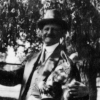 Jack Moses
Jack Moses
John Moses (1861-1945), commonly known as “Jack”, was an author, poet, and salesman. He is best known for the poem “Nine Miles from Gundagai”. Moses published two books: Beyond the City Gates: Australian Story & Verse (1923) and Nine Miles From Gundagai (1938).
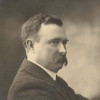 “Dryblower” Murphy
“Dryblower” Murphy
Edwin Greenslade Murphy (1866-1939), who wrote under the name of “Dryblower”, was a popular journalist and poet, especially in the state of Western Australia. He worked for The Sunday Times in Perth (WA) for over 37 years, contributing articles, topical items, and poetry. Often his poems were humorous takes on current events, and were included in his long-running column, “Verse and Worse”. Murphy produced two books of poetry: Jarrahland Jingles (1908) and Dryblower’s Verses (1926).
John Neilson
John Neilson (1844-1922) was a farmer, contractor, and poet. His most well-known work was “Another Fall of Rain” (also known as “Waiting for the Rain” and “The Song of the Shearer”), which was included in Banjo Paterson’s book, The Old Bush Songs (1905). He was the father of the well-known poet John Shaw Neilson (1872-1942).
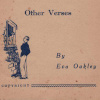 Eva Oakley
Eva Oakley
Eva Oakley (1881-1952) was an Australian author and poet. She mainly wrote poetry and stories for children; however, she penned some cookery books and religious verses as well. Whilst Eva’s output was not overly Australian in its content, it included various poems and stories which mentioned gum trees, gum nut babies, and other Australian iconography. Although she was not a major contributor to the national literary scene, her work provides an example of the small-scale contributions to Australian literature which were often made by lesser-known writers.
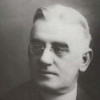 John O’Brien
John O’Brien
John O’Brien was the pen-name of Patrick Joseph Hartigan (1878-1952), an author, poet, and Catholic priest. He wrote four books (two of which were published posthumously). O’Brien is best known for his first book of poetry, Around the Boree Log and Other Verses (1921).
 Bernard O’Dowd
Bernard O’Dowd
Bernard O’Dowd (1866-1953) was an Australian poet, teacher, and parliamentary draughtsman. He was a contributor to The Bulletin. O’Dowd was the author of sixteen books (mostly poetry, as well as some legal texts).
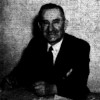 P. I. O’Leary
P. I. O’Leary
Patrick Ignatius Davitt O’Leary (1888-1944) was a journalist and poet. He wrote articles and poetry for several publications, and became widely known for his writings in The Advocate, especially on the subject of Australian literature. His work was often signed “P. I. O’L.”, although he also used the pseudonyms “Francis Davitt”, “Historicus”, and “M”.
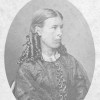 Menie Parkes
Menie Parkes
Clarinda Sarah Parkes (1839-1915), known as Menie, was an author and poet. She was a daughter of Henry Parkes (Premier of New South Wales). Her poems and stories were published in various periodicals, including The Australian Town and Country Journal and The Australian Home Companion and Band of Hope Journal, with many of her works being written under pseudonyms, such as “Patty Parsley”, “Alethea”, and “Ariel”. Whilst most of her poetry was of a style not favoured nowadays, her poem “Our Darling’s Lover” is of a timeless style, and was included in The Oxford Book of Australian Women’s Verse (1995).
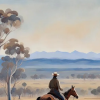 Weston Phillips
Weston Phillips
Weston Phillips (1835-1883) was a chemist, explorer, and drover, as well as being an expert in Aboriginal anthropology. He was part of the 1862 search party, led by Alfred Howitt, sent to look for the missing members of the Burke and Wills expedition.
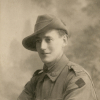 Frank Roberts
Frank Roberts
Francis William Roberts (1888-1918), known as Frank, was a soldier in the Australian Imperial Force, who died in France in 1918. He was not famous, nor highly decorated, but was simply an ordinary and brave soldier who fought for his country; he was one of over 60,000 Australians who died in the First World War.
 Thomas Richard Roydhouse
Thomas Richard Roydhouse
Thomas Richard Roydhouse (1862-1943) was an author and journalist, especially well-known for his novel, The Coloured Conquest (1904). He was also instrumental in the establishment of the Boy Scouts and Girl Guides in New South Wales.
Una Shaw
Una Yeatman Shaw (1900-1970) was an Australian poet from Singleton (NSW). Her poetry was published in various newspapers and periodicals, including The Australian Woman’s Mirror and the monthly poetry magazine Birth: A Little Journal of Australian Poetry.
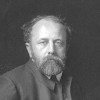 A. G. Stephens
A. G. Stephens
Alfred George Stephens (1865-1933) was a prominent literary critic, editor, and publisher, as well as being an author and poet. He is best known as the editor of the “Red Page”, the literary section of The Bulletin (Sydney). A. G. Stephens is regarded as a major figure in Australia’s literary history, having encouraged a large number of Australian authors (including the editing and publishing of many of their works).
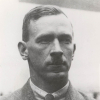 P. R. Stephensen
P. R. Stephensen
Percy Reginald Stephensen (1901-1965) was an author, poet, editor, and publisher. He is regarded as a major figure in the push for Australian cultural nationalism (also known as Australianism), a reputation which was especially earned with the publication of his book, The Foundations of Culture in Australia (1936). He commonly signed his articles as “P. R. Stephensen” or “P.R.S.”; although he was known to many of his friends as “Inky”.
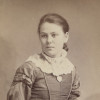 Agnes Louisa Storrie
Agnes Louisa Storrie
Agnes Louisa Storrie (1864-1936) was a poet, author, journalist, and campaigner. She wrote poetry, articles, and short stories; and was a leading campaigner in the Wattle Day movement. Storrie also wrote under her married name of Kettlewell.
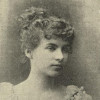 Ethel Turner
Ethel Turner
Ethel Turner (1870-1958) was an author and poet, especially well-known as a writer of novels for children and young adults. Her most famous book is Seven Little Australians (1894), which has been distributed around the world, and has been translated into several languages.
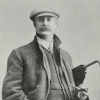 Richard Yeoman
Richard Yeoman
Richard Yeoman (1856-1914) was a leading commercial photographer, who ran a photography business in Melbourne in the late 19th and early 20th century. He was regarded as one of the pioneers of photography in Victoria.
Note: Lists of works are available for the following writers, although biographies have not (as yet) been written for them for this site.
Mary Gilmore
Henry Lawson
John Shaw Neilson
“Banjo” Paterson
Marie E. J. Pitt
Professor Ernest Scott
Updated 30 July 2024